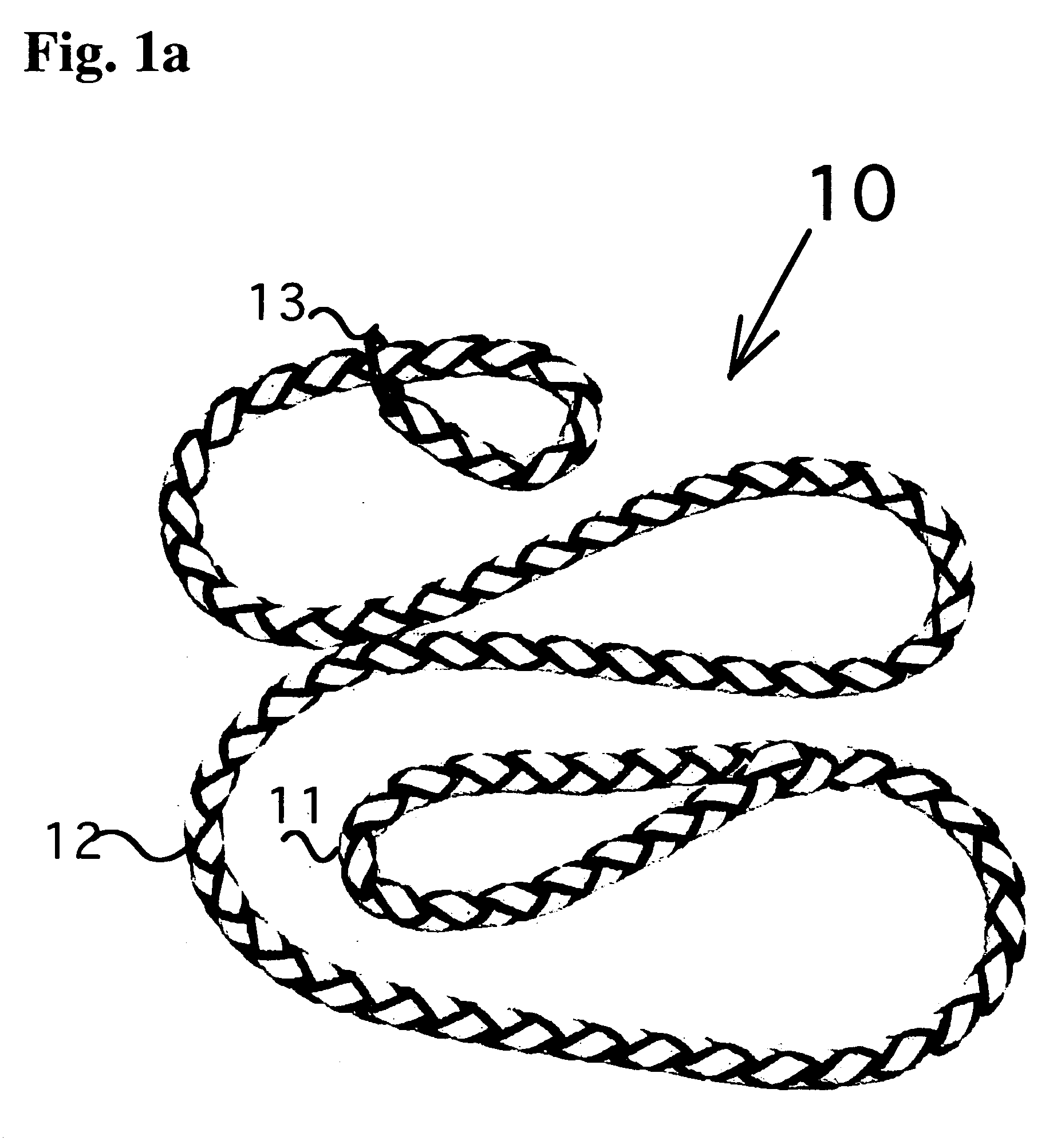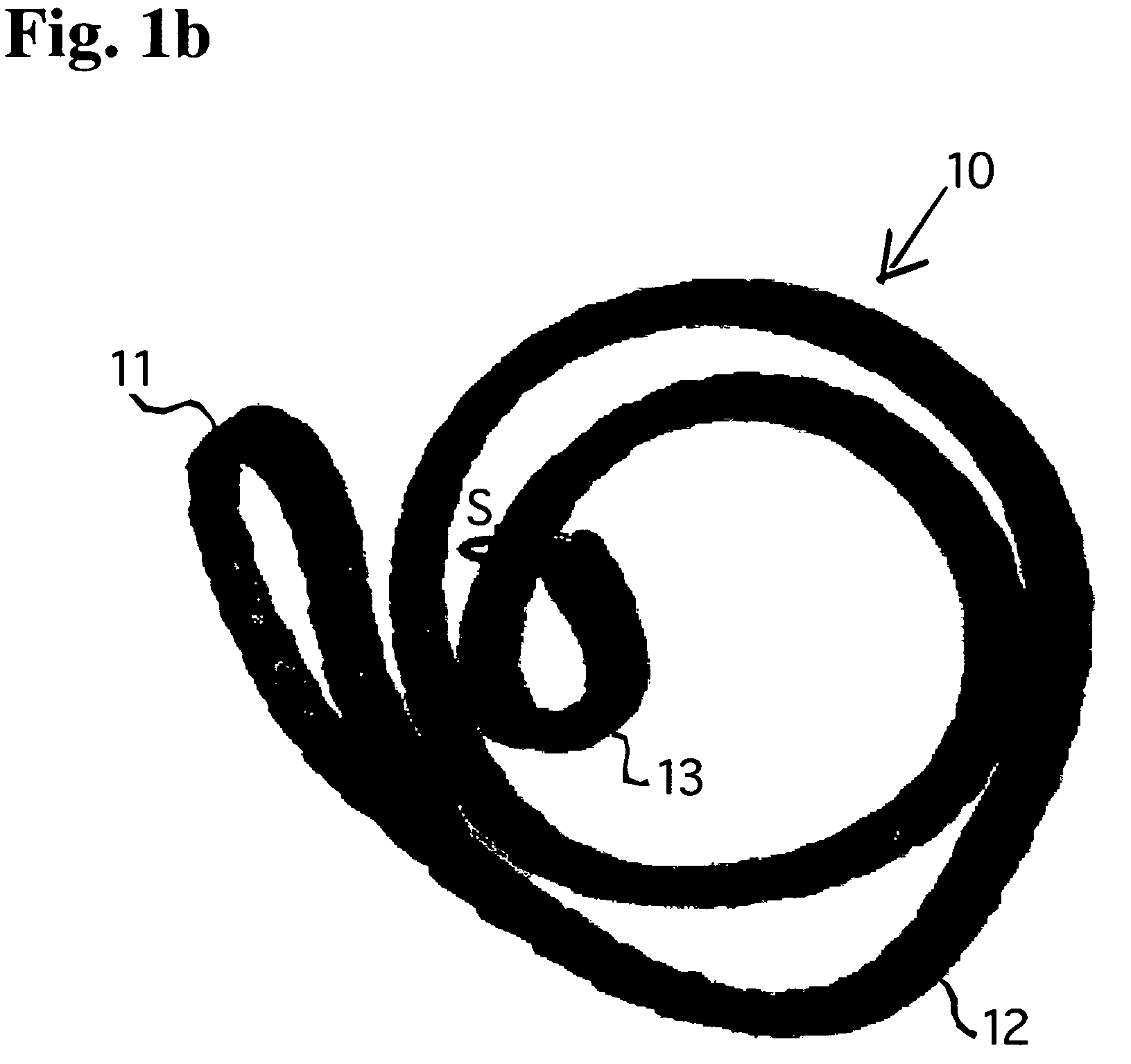Omnidirectionally reflective horse halter
a reflective, horse technology, applied in the field of horse halters, can solve the problems of not always being able to use high intensity illumination, similar risks associated with riding horses, and walking on horse ranches at dusk or nighttime hours can be hazardous, etc., to achieve the effect of reducing the risk of injury
- Summary
- Abstract
- Description
- Claims
- Application Information
AI Technical Summary
Benefits of technology
Problems solved by technology
Method used
Image
Examples
second embodiment
[0056] In a second embodiment, a horse halter is provided without a bridle bit; but with omnidirectionally reflective elements placed between adjustable buckles. Metallic rings or spring loaded clasps are used as connective elements between the omnidirectionally reflective elements and adjustable buckles. This omnidirectionally reflective horse halter is used when the horse is allowed to freely roam in a paddock or field. One of the adjustable buckles is designed as a breakaway link, which releases the horse when the halter is accidentally caught in a tree branch. The omnidirectionally reflective horse halter reflects the incident light from a light source carried by a walker or a second horse rider during dusk or nighttime hours. The low intensity light source carried by the walker does not alarm the horse, and the walker or second horse rider safely avoids unexpected encounters with a roaming horse, decreasing or eliminating the possibilities of accidents.
[0057] The abrasion resis...
fourth embodiment
[0066] In a fourth embodiment, the horse harness is provided with at least one omnidirectionally reflective section, which reflects light back to the source, and the bridle bit is removed, thereby providing a halter. The crown section of the halter is constructed of leather, which can tear when the horse becomes entrapped by the branch or limb of a tree. This halter is suitable for application to a horse that is freely roaming within a paddock or field (for example, on a horse ranch). The reflective section is preferably attached to at least one break-away buckle located aside the horse's head. The leather section, comprising the crown, spans the distance above the horse's head and immediately behind the animal's ears. Adjusting buckles to which the leather section is attached are constructed from metallic rings or spring-loaded clasps. The adjustment of the buckles is made to secure the harness snugly around the head of a horse. One of the metallic rings is fashioned to be a breaka...
third embodiment
[0089]FIG. 6 shows a schematic diagram of the A horse 61 is fitted with a horse halter 60 without a bridal bit. This halter is usually used when the horse is free to roam in the horse ranch. The arrangement is similar to that described in FIG. 5 except that the omnidirectionally reflective element comprises the nose band section 62 of the horse harness located at the muzzle. The other sections of the harness, including crown 63, are not omnidirectionally reflective. The breakaway link 64 connected to nose band 72 and the attachment link 65 connected to crown 63 are adapted to release the horse when the halter is accidentally caught in a tree limb or branch.
[0090]FIG. 7 shows a schematic diagram of the fourth embodiment. A horse 71 is fitted with a horse halter 70 without a bridal bit. This halter is usually used when the horse is free to roam in the horse ranch. The arrangement is similar to that described in FIG. 5 except that the omnidirectionally reflective element is crown 72 l...
PUM
 Login to View More
Login to View More Abstract
Description
Claims
Application Information
 Login to View More
Login to View More - R&D
- Intellectual Property
- Life Sciences
- Materials
- Tech Scout
- Unparalleled Data Quality
- Higher Quality Content
- 60% Fewer Hallucinations
Browse by: Latest US Patents, China's latest patents, Technical Efficacy Thesaurus, Application Domain, Technology Topic, Popular Technical Reports.
© 2025 PatSnap. All rights reserved.Legal|Privacy policy|Modern Slavery Act Transparency Statement|Sitemap|About US| Contact US: help@patsnap.com



